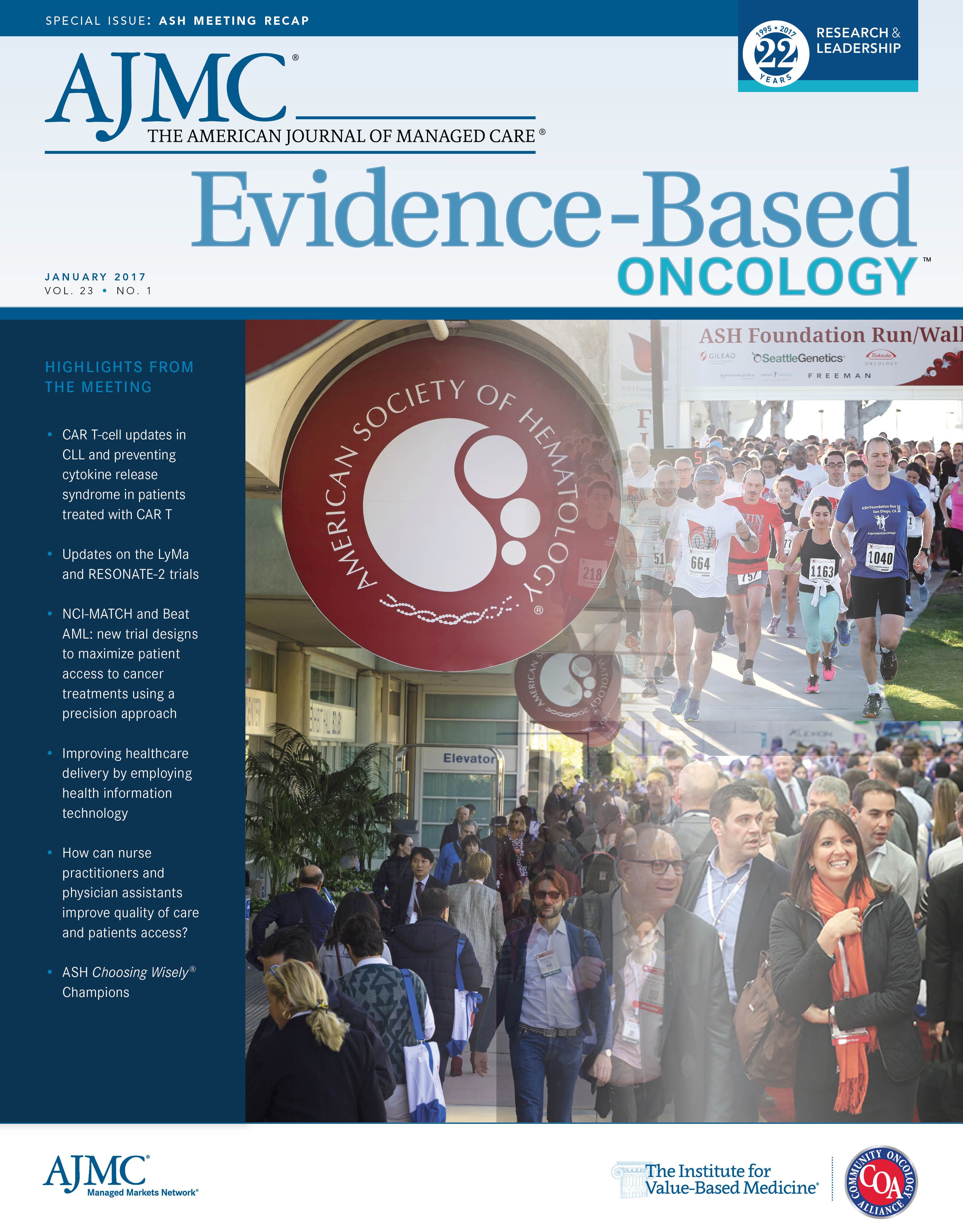Publication
Article
Evidence-Based Oncology
Prior Ibrutinib Treatment Improves CAR T-Cell Expansion, Could Impact Response in CLL
Author(s):
The improved expansion of chimeric antigen receptor (CAR) T-cells indicates a deeper clinical response.
CONCURRENT TREATMENT WITH THE
Bruton’s tyrosine kinase inhibitor, ibrutinib, improves expansion of chimeric antigen receptor (CAR)-T cells, and could subsequently improve response in patients with chronic lymphocytic leukemia (CLL). This was the conclusion drawn by Mark Blaine Geyer, MD, Leukemia Service, Department of Medicine, Memorial Sloan Kettering Cancer Center, New York, as he presented the results of their study during the American Society of Hematology’s annual meeting.
Ibrutinib, which has considerable efficacy as a single agent in patients with relapsed/refractory CLL, may modulate antitumor T-cell immune responses, Geyer told the audience, adding that studies have shown an enhanced ex vivo expansion of autologous T cells collected from patients treated with ibrutinib. This enhanced expansion following CD3/CD28 bead stimulation was also found to improve CD19-targeted CAR T-cell engraftment and antitumor efficacy in human xenograft models.1 The study results presented by Geyer were from patients with CLL who were treated with ibrutinib at the time of autologous T-cell collection and/or around the time of CAR T-cell infusion enrolled in a phase 1 clinical trial of CD19-targeted CAR-T cells for adults with relapsed/ refractory CLL or B-cell non-Hodgkin lymphoma.2
According to the study design shared by Geyer, 11 patients with CLL underwent leukapheresis followed by T-cell expansion and transduction. Patients were then evaluated for disease status and their peripheral blood and marrow samples were collected, followed by conditioning chemotherapy (2 to 7 days prior to the CAR T-cell infusion). Following the CAR T-cell infusion, peripheral blood samples were collected for postinfusion monitoring, including for cytokine response. “For the control group, we identified all evaluable ibrutinib-naïve patients with CLL treated on this study,” Geyer told the audience.
Five patients (median age 58 years at CAR T-cell infusion) with relapsed/ refractory CLL underwent therapy with ibrutinib at leukapheresis and/or immediately prior to or through conditioning chemotherapy (2 patients received cyclophosphamide and 3 received fludarabine) and CAR T-cell infusion; 6 additional evaluable patients with relapsed/refractory CLL remained ibrutinib-naïve through the conditioning regimen (4 received cyclophosphamide and 2 received bendamustine) and CAR T-cell infusion.
“We observed a nonsignificant trend toward greater median cumulative fold T-cell expansion ex vivo in the 5 patients on ibrutinib versus the 6 not on ibrutinib at leukapheresis,” Geyer said, “with similar median manufacturing times of 13.5 versus 15 days [respectively].” According to data that Geyer shared, end-ofprocess T cells in patients treated with ibrutinib included a greater fraction of CD8+CAR+ T cells, with a CD62L+CD127+ phenotype, and decreased fraction of CD62L-negative T cells.
Table
The indicates the toxicities that were documented in patients. Ibrutinib-treated patients additionally exhibited greater median peak levels of multiple immunoregulatory cytokines associated with cytokine release syndrome, including IL-6, IL-10, IL-2, IL-5, IFNγ, FLT3L, fractalkine, and GM-CSF, Geyer told the audience.
Five of the 11 patients enrolled in the trial who were treated with conditioning chemotherapy and CAR-T cells achieved an objective response. The objective response rate (ORR) was 4/5 among ibrutinib-treated patients: 1 complete response (CR) without minimal residual disease (MRD), 1 MRD+ CR, and 2 partial responses (P = .08 for ORR between ibrutinib-treated vs ibrutinib-naïve patients). “Two patients remain in MRD-negative CR at 16 and 50 months, and they saw peak expansion between 7 and 14 days after CAR T-cell infusion,” Geyer said, adding, Four of the 6 ibrutinib-naïve patients died, while 5 of the patients treated with ibrutinib continue to survive. Geyer concluded that while prior ibrutinib therapy improves autologous T-cell expansion ex vivo and influence CAR T-cell phenotypes, it can potentially amplify toxicities associated with CAR T-cell treatment, including CRS. However, differences in the conditioning therapy confound the comparison between patient groups.
“Greater CAR T-cell expansion in vivo is an indicator of deeper clinical response,” Geyer said.
REFERENCES
- Fraietta JA, Beckwith KA, Patel PR, et al. Ibrutinib enhances chimeric antigen receptor T-cell engraftment and efficacy in leukemia. Blood. 2016;127(9):1117-1127. doi: 10.1182/blood-2015-11-679134.
- Geyer MB, Park JH, Riviere I, et al. Implications of concurrent ibrutinib therapy on CAR T-cell manufacturing and phenotype and on clinical outcomes following CD19-targeted CAR T-cell administration in adults with relapsed/refractory CLL. Presented at: 58th American Society of Hematology Annual Meeting & Exposition; December 3, 2016; San Diego, CA. Abstract 58.





